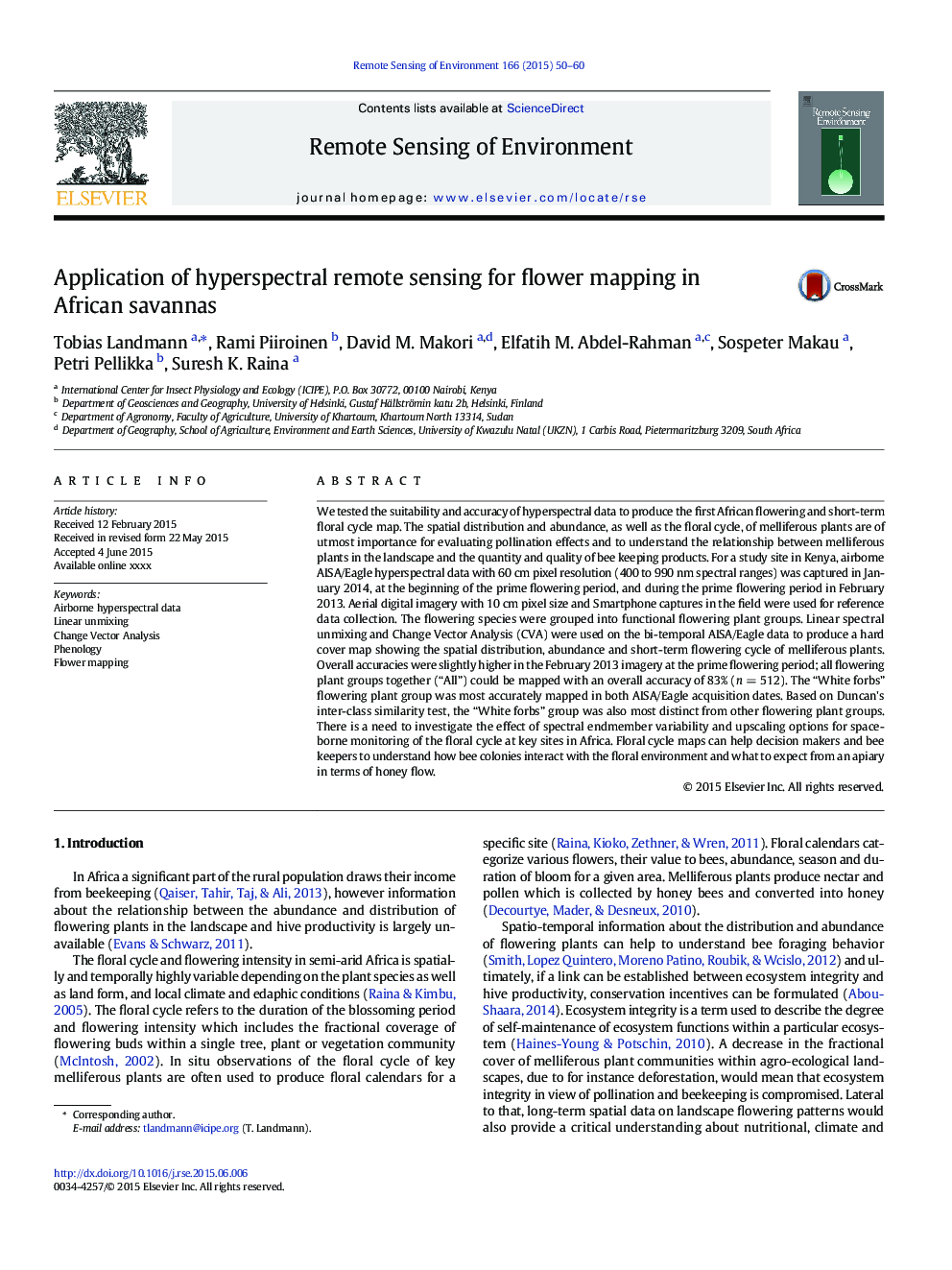| Article ID | Journal | Published Year | Pages | File Type |
|---|---|---|---|---|
| 6345907 | Remote Sensing of Environment | 2015 | 11 Pages |
Abstract
We tested the suitability and accuracy of hyperspectral data to produce the first African flowering and short-term floral cycle map. The spatial distribution and abundance, as well as the floral cycle, of melliferous plants are of utmost importance for evaluating pollination effects and to understand the relationship between melliferous plants in the landscape and the quantity and quality of bee keeping products. For a study site in Kenya, airborne AISA/Eagle hyperspectral data with 60 cm pixel resolution (400 to 990 nm spectral ranges) was captured in January 2014, at the beginning of the prime flowering period, and during the prime flowering period in February 2013. Aerial digital imagery with 10 cm pixel size and Smartphone captures in the field were used for reference data collection. The flowering species were grouped into functional flowering plant groups. Linear spectral unmixing and Change Vector Analysis (CVA) were used on the bi-temporal AISA/Eagle data to produce a hard cover map showing the spatial distribution, abundance and short-term flowering cycle of melliferous plants. Overall accuracies were slightly higher in the February 2013 imagery at the prime flowering period; all flowering plant groups together (“All”) could be mapped with an overall accuracy of 83% (n = 512). The “White forbs” flowering plant group was most accurately mapped in both AISA/Eagle acquisition dates. Based on Duncan's inter-class similarity test, the “White forbs” group was also most distinct from other flowering plant groups. There is a need to investigate the effect of spectral endmember variability and upscaling options for space-borne monitoring of the floral cycle at key sites in Africa. Floral cycle maps can help decision makers and bee keepers to understand how bee colonies interact with the floral environment and what to expect from an apiary in terms of honey flow.
Related Topics
Physical Sciences and Engineering
Earth and Planetary Sciences
Computers in Earth Sciences
Authors
Tobias Landmann, Rami Piiroinen, David M. Makori, Elfatih M. Abdel-Rahman, Sospeter Makau, Petri Pellikka, Suresh K. Raina,
